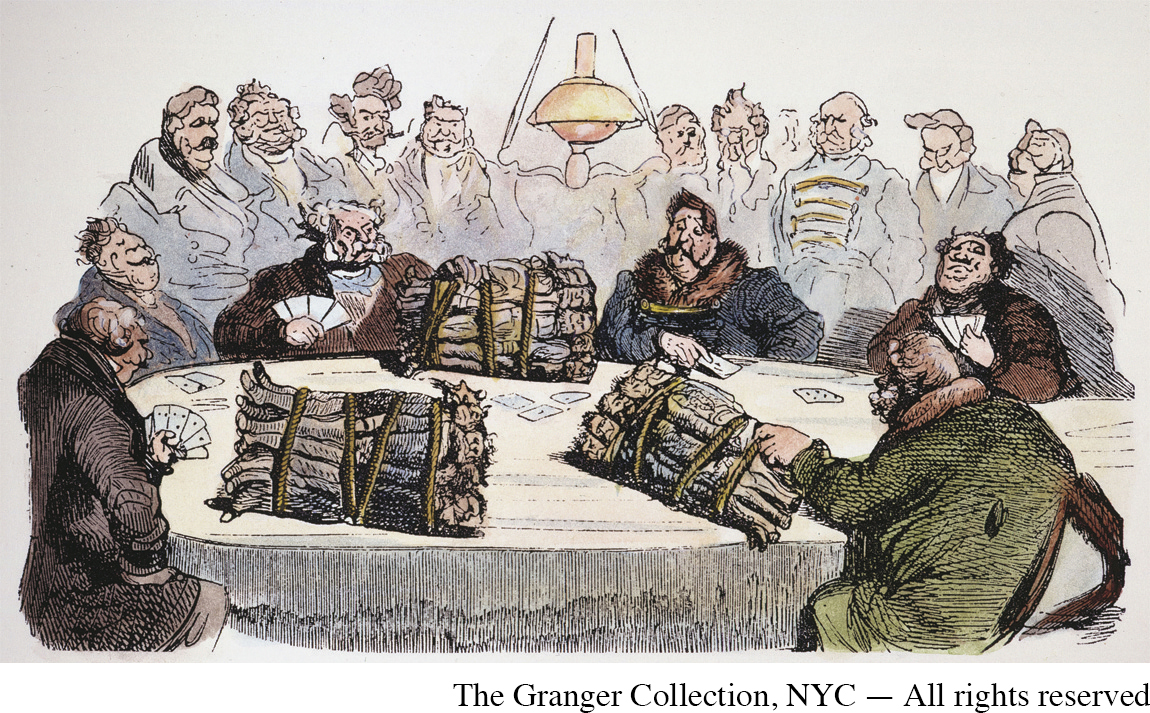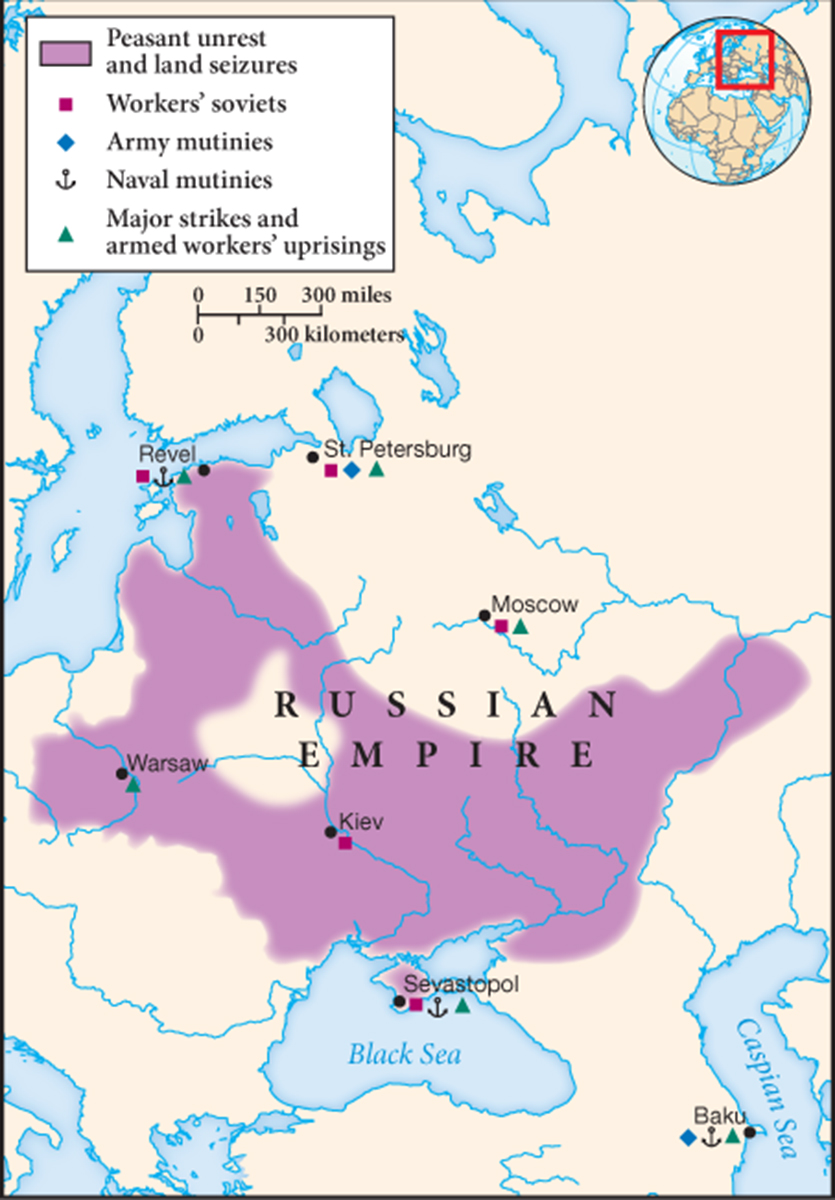Russia: Industrialization and Revolution
As a setting for the Industrial Revolution, it would be hard to imagine two more different environments than the United States and Russia. If the United States was the Western world’s most exuberant democracy during the nineteenth century, Russia remained the sole outpost of absolute monarchy, in which the state exercised far greater control over individuals and society than anywhere in the Western world.
At the beginning of the twentieth century, Russia still had no national parliament, no legal political parties, and no nationwide elections. The tsar, answerable to God alone, ruled unchecked. Furthermore, Russian society was dominated by a titled nobility of various ranks. Its upper levels included great landowners, who furnished the state with military officers and leading government officials. Until 1861, most Russians were peasant serfs, bound to the estates of their masters, subject to sale, greatly exploited, and largely at the mercy of their owners. A vast cultural gulf separated these two classes. Many nobles were highly westernized, some speaking French better than Russian, whereas their serfs were steeped in a backwoods Orthodox Christianity that incorporated pre-
A further difference between Russia and the United States lay in the source of social and economic change. In the United States, such change bubbled up from society as free farmers, workers, and businessmen sought new opportunities and operated in a political system that gave them varying degrees of expression. In autocratic Russia, change was far more often initiated by the state itself, in its continuing efforts to catch up with the more powerful and innovative states of Europe. This kind of “transformation from above” found an early expression in the reign of Peter the Great (r. 1689–

Change
What factors contributed to the making of a revolutionary situation in Russia by the beginning of the twentieth century?
By the 1890s, Russia’s Industrial Revolution was launched and growing rapidly. It focused particularly on railroads and heavy industry and was fueled by a substantial amount of foreign investment. By 1900, Russia ranked fourth in the world in steel production and had major industries in coal, textiles, and oil. Its industrial enterprises, still modest in comparison to those of Europe, were concentrated in a few major cities—
All of this contributed to the explosive social outcomes of Russian industrialization. A growing middle class of businessmen and professionals increasingly took shape. As modern and educated people, many in the middle class objected strongly to the deep conservatism of tsarist Russia and sought a greater role in political life, but they were also dependent on the state for contracts and jobs and for suppressing the growing radicalism of the workers, which they greatly feared. Although factory workers constituted only about 5 percent of Russia’s total population, they quickly developed a radical class consciousness, based on harsh conditions and the absence of any legal outlet for their grievances. As in Western Europe, millions flocked to the new centers of industrial development. By 1897, over 70 percent of the population in Moscow and St. Petersburg were recent migrants from the rural areas. Their conditions of life resembled those of industrial migrants in New York or Berlin. One observer wrote: “People live in impossible conditions: filth, stench, suffocating heat. They lie down together barely a few feet apart; there is no division between the sexes and adults sleep with children.”29 Until 1897, a thirteen-

In these conditions, a small but growing number of educated Russians found in Marxist socialism a way of understanding the changes they witnessed daily as well as hope for the future in a revolutionary upheaval of workers. In 1898, they created an illegal Russian Social-
The 1905 revolution, though brutally suppressed, forced the tsar’s regime to make more substantial reforms than it had ever contemplated. It granted a constitution, legalized both trade unions and political parties, and permitted the election of a national assembly, called the Duma. Censorship was eased, and plans were under way for universal primary education. Industrial development likewise continued at a rapid rate, so that by 1914 Russia stood fifth in the world in terms of overall output. But in the first half of that year, some 1,250,000 workers, representing about 40 percent of the entire industrial workforce, went out on strike.
Thus the tsar’s limited political reforms, which had been granted with great reluctance and were often reversed in practice, failed to tame working-
World War I provided that moment. The enormous hardships of that war, coupled with the immense social tensions of industrialization within a still-
SUMMING UP SO FAR
What was common to industrialization everywhere, and in what ways did it vary from place to place?